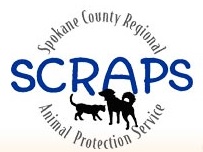
 Flying can be stressful for humans; for pets it can be down-right terrifying.
Flying can be stressful for humans; for pets it can be down-right terrifying.
When making travel decisions, choose what is safest and most comfortable for your pet. Airplanes are not recommended unless it is absolutely necessary.
If you must fly, check with your airline to see if your pet can travel in the cabin with you. If not, here are some other tips to help you make the flight as comfortable as possible.


- Make an appointment with your pet’s veterinarian for a checkup, and make sure all vaccinations are up-to-date. Obtain a health certificate from your veterinarian dated within 10 days of departure.
- Make sure your pet has a microchip for identification and is wearing a collar and ID tag. The collar should also include destination information in case your pet escapes.
- Book a direct flight whenever possible and book your pet on the same flight you are on.
- Purchase a USDA-approved shipping crate that is large enough for your pet to stand, sit, and turn around in comfortably. Make sure your airline accepts the size crate you need.
- Write the words “Live Animal” in letters at least one inch tall on top of and at least one side of the crate. On top of the crate, write the name, address, and telephone number of your pet’s destination point, and whether you will be accompanying him or if someone else is picking him up.
- Make sure that the door is securely closed, but not locked, so that airline personnel can open it in case of an emergency.
- Line the crate bottom with some type of bedding – shredded paper or towels – to absorb accidents.
- Affix a current photograph of your pet to the top of the crate for identification purposes. Should your pet escape from the carrier, this could be a lifesaver. You should also carry a photograph of your pet.
- The night before you leave, make sure you’ve frozen a small dish or tray of water for your pet. This way, it can’t spill during loading, and will melt by the time they’re thirsty. Tranquilizing your pet is generally not recommended, as it could hamper they’re breathing. Check with your veterinarian first.
- Tell every airline employee you encounter, on the ground and in the air, that you are traveling with a pet in the cargo hold. This way, they’ll be ready if any additional considerations or attention is needed.
- If the plane is delayed, or if you have any concerns about the welfare of your pet, insist that airline personnel check the animal whenever feasible. In certain situations, removing the animal from the cargo hold and de-planeing may be warranted.
- Don’t ever ship brachycephalic animals such as Pekingese dogs, bulldogs, or Persian cats, in the cargo holds.
- If traveling during the summer or winter months, choose flights that will accommodate the temperature extremes. Early morning or late evening flights are better in the summer; afternoon flights are better in the winter.
- Make sure that your pet’s nails have been clipped to protect against them getting hooked in the carrier’s door, holes, and other crevices.
- Give your pet at least a month before your flight to become familiar with the travel carrier. This will minimize his or her stress during travel.
- Try not to fly with your pet during busy travel times such as holidays and the summer. Your pet is more likely to undergo rough handling during hectic travel periods.
- When you arrive at your destination, open the carrier as soon as you are in a safe place and examine your pet. If anything seems wrong, take your pet to a veterinarian immediately. Get the results of the examination in writing, including the date and time.
SOURCE – SCRAPS release, 2016



